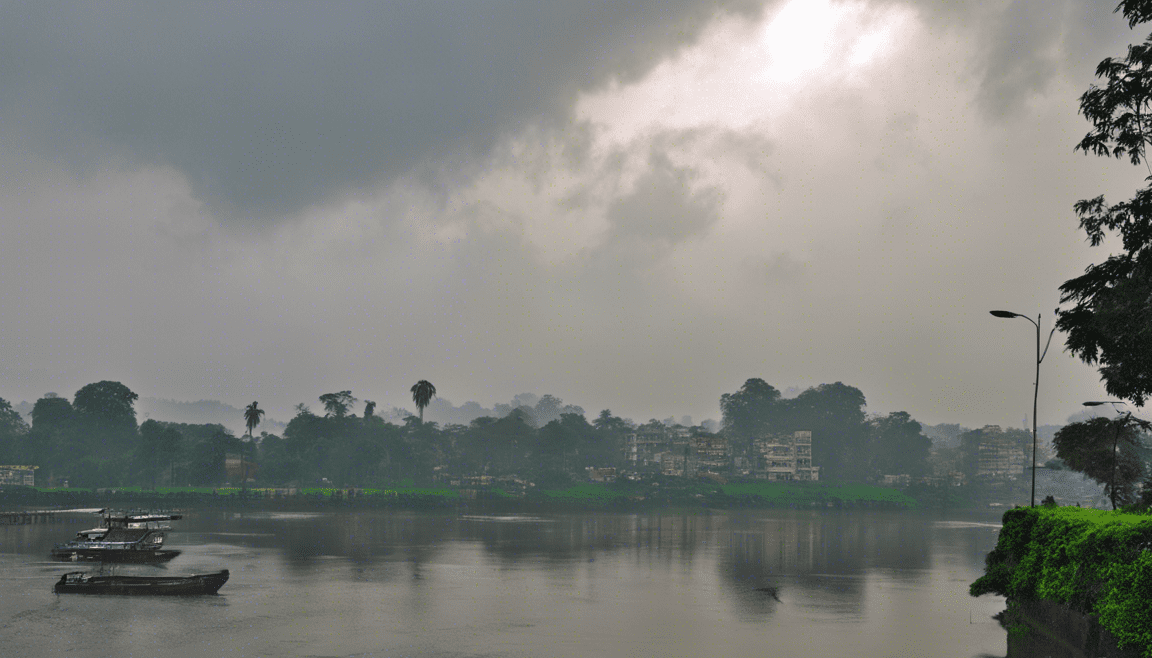Located in the northeastern part of India, Guwahati is the largest city in the state of Assam. Known for its rich cultural heritage, diverse population, and stunning landscapes, Guwahati also experiences a unique climate throughout the year. Understanding the climate patterns of Guwahati is essential for visitors and residents alike to make the most of their time in this vibrant city. In this article, we will delve into the different seasons in Guwahati, tips on how to best prepare for the weather, and insights into the city’s climate variations.
Guwahati’s Seasons
1. Summer (March – June)
During the summer months, Guwahati experiences hot and humid weather. Temperatures can reach as high as 38°C (100°F), making it essential to stay hydrated and protect yourself from the sun. Light cotton clothing and sunscreen are recommended during this season. Though the weather can be quite warm, summer in Guwahati also brings the lush greenery of the surrounding region to life, making it a good time for nature lovers to explore the city’s parks and botanical gardens.
2. Monsoon (July – September)
The monsoon season in Guwahati is characterized by heavy rainfall and cooler temperatures. The city receives a significant amount of rainfall during these months, which helps maintain its lush environment. However, the rain can also lead to occasional flooding and transportation disruptions. It is advisable to carry an umbrella or raincoat when venturing out during this season.
3. Autumn (October – November)
Autumn in Guwahati is a pleasant time to visit, with milder temperatures and clear skies. The weather is relatively dry during this period, making it ideal for outdoor activities and sightseeing. Light layers are recommended as the mornings and evenings can be cooler compared to the daytime temperatures.
4. Winter (December – February)
Winter in Guwahati is characterized by cool and comfortable weather, with temperatures ranging from 10°C to 25°C (50°F to 77°F). While the city does not experience extreme cold, it is advisable to pack some warm clothing such as sweaters or jackets, especially for the evenings. Winter is a popular time for tourists to visit Guwahati, as the weather is conducive to exploring the city’s attractions.
Tips for Dealing with Guwahati’s Climate
- Stay Hydrated: Given the hot and humid climate of Guwahati, it is important to drink plenty of water to stay hydrated.
- Sun Protection: Wear sunscreen, sunglasses, and hats to protect yourself from the harsh sun, especially during the summer months.
- Rain Gear: Be prepared for sudden downpours during the monsoon season by carrying an umbrella or raincoat.
- Mosquito Repellent: Due to the humid conditions, mosquito repellent is essential to prevent mosquito bites, especially during the rainy season.
- Comfortable Clothing: Opt for light and breathable fabrics to stay comfortable in Guwahati’s tropical climate.
- Check Weather Updates: Stay informed about the weather forecast to plan your outdoor activities accordingly.
Insights into Guwahati’s Climate Variations
- Guwahati’s proximity to the Brahmaputra River influences its climate, with the river acting as a moderating factor for temperatures.
- The city’s green cover and abundant rainfall contribute to its subtropical climate, characterized by warm temperatures and high humidity.
- Climate change has led to fluctuations in Guwahati’s weather patterns, with instances of extreme rainfall events and unseasonal temperature variations becoming more common.
Understanding the climate of Guwahati is crucial for both residents and visitors to prepare adequately for the weather conditions and make the most of their time in this captivating city. By following the tips provided and being aware of the different seasons, you can experience Guwahati’s diverse climate offerings to the fullest.
Frequently Asked Questions (FAQs)
**1. What is the best time to visit Guwahati?
The best time to visit Guwahati is during the winter months from December to February when the weather is cool and comfortable for sightseeing.
**2. Does Guwahati experience extreme weather conditions?
While Guwahati does not experience extreme cold, it can have hot and humid summers and heavy rainfall during the monsoon season.
**3. Are there any specific health concerns related to Guwahati’s climate?
Mosquito-borne diseases are a concern in Guwahati due to the humid climate, so it is advisable to use mosquito repellent and take necessary precautions.
**4. How should I dress for the different seasons in Guwahati?
Light and breathable clothing is recommended for the summer months, while carrying rain gear is essential during the monsoon season. Layering is advisable for autumn, and warm clothing is needed for winter evenings.
**5. What outdoor activities are popular in Guwahati during each season?
During summer, visiting parks and gardens is popular, while the monsoon season is ideal for enjoying the lush greenery. Autumn is perfect for outdoor excursions, and winter is great for exploring cultural sites and attractions.
**6. How does the Brahmaputra River influence Guwahati’s climate?
The Brahmaputra River helps moderate temperatures in Guwahati and contributes to the city’s unique sub-tropical climate.
**7. Are there any climate change effects observed in Guwahati?
Yes, Guwahati has witnessed the impact of climate change with more frequent extreme rainfall events and unseasonal temperature variations in recent years.
**8. What precautions should I take during the monsoon season in Guwahati?
It is essential to stay indoors during heavy downpours, carry an umbrella or raincoat when going out, and avoid areas prone to flooding.
**9. Can I experience wildlife biodiversity in Guwahati due to its climate?
Yes, Guwahati’s climate supports a rich biodiversity, making it possible to explore nature reserves and wildlife sanctuaries in the region.
**10. Does Guwahati have any microclimates within the city?
Certain areas in Guwahati may have microclimates influenced by factors such as elevation and vegetation cover, leading to slight variations in temperature and humidity levels.

